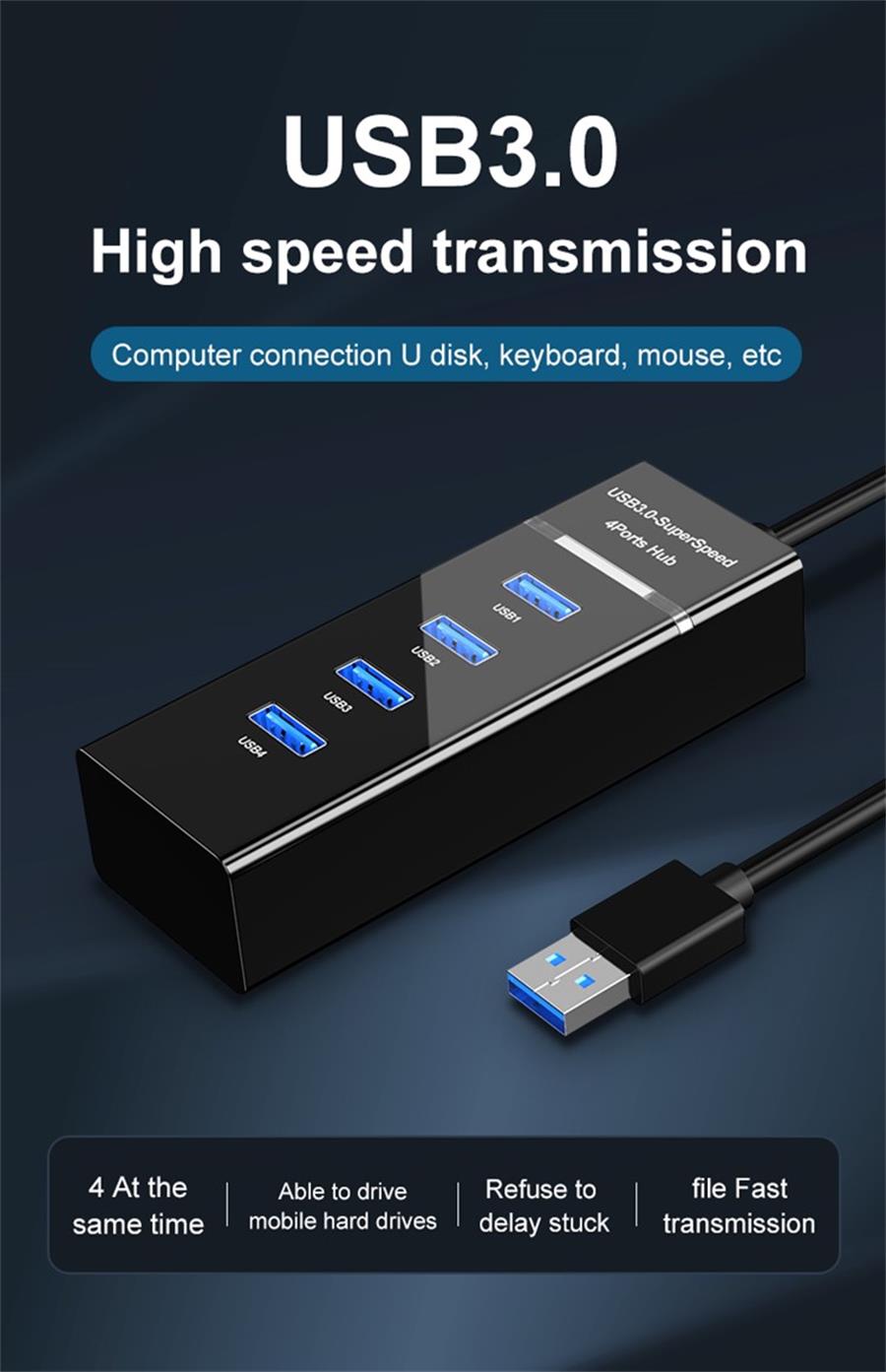This article refers to the address: http:// USB3.0 provides a standard interface for all kinds of devices that are connected to PCS or audio/high-frequency devices.The theoretical transmission speed is up to 5Gbps. HUB is commonly known as a hub, which is used to connect multiple computers or network devices in a network using a star topology. The USB 3.0 Hubs is an upgrade of the USB 2.0 Hubs. The transmission rate of the USB2.0 is 480Mbps, and the transmission rate of the USB3.0 is 5Gbps. The maximum transmission speed is 10 times that of the USB2.0, and the transmission speed is faster.
The USB 3.0 hub provides a quick and easy way to connect all the peripherals you use on your desktop. You can connect 2 external monitors, gigabit Ethernet ports, headphones/speakers, USB printers and scanners, keyboards, mice and other peripherals with a single USB 3.0 cable to your computer for up to 5Gbit/s external storage access (10 times faster than USB 2.0). USB HUBS can do split, but not evenly. If, as the subject says, you only have two devices, and the two devices are transmitting at the same time and taking up as much bandwidth as possible, then you end up with two devices each taking up 50% of the bandwidth. Due to the fast theoretical speed of USB3.0, even if divided into four parts, the theoretical bandwidth of each port is still as high as 1Gbps, and the number of converted bytes is close to 100MB/s, which is still a very high bandwidth.
Usb 3.0 Hubs,Wireless Usb Hub,Usb C Hub For Desktop,All In One Usb C Hub Henan Yijiao Trading Co., Ltd , https://www.yijiaousb.com
RF Magic, in collaboration with STMicroelectronics, has certified the entire firmware of the DVB-C silicon tuner to interact with ST's latest video demodulator and integrated MPEG decoder and demodulator.
Based on RF Magic's AdaptiveTuneTM technology, the RF4800 product includes all the necessary front-end features and does not require an external SAW filter or amplifier. In addition, AdaptiveTune technology allows software to program important tuner settings and thus optimize front-end performance in different environmental conditions.
The STV297E involves a very compact DVB-C single-chip transceiver that consumes very little power and can convert ZF difference signals or baseband difference signals for QAM carriers (Quadrature Amplitude Modulation) in MPEG-2 blocks. . The STV297E meets the DVB-C specification (EN 300 429) and the NorDig unified specification.
The NorDig compatibility test has been performed and companies can immediately provide reference designs that are ready for use in production.
